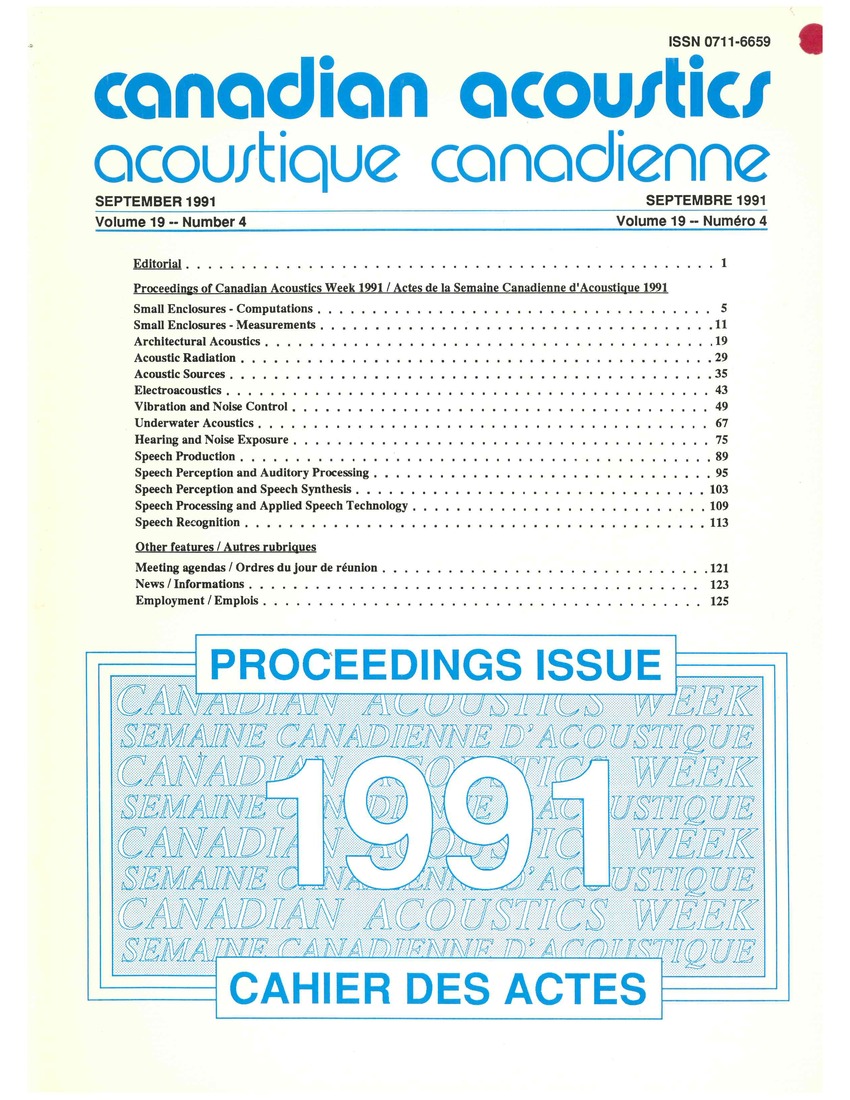A computer-driven program to improve speech perception and speech production skills
Keywords:
speech, speech intelligibility, training, speech production skills, misarticulating children, phonemic perception, speech sounds, subperceptual category boundaries, standard phonemic categories, sound identification training, phonologically delayed preschoolersAbstract
Several studies have shown that a subgroup of misarticulating children has significant difficulties with the phonemic perception of speech sounds (Broen, Strange, Doyle, & Heller, 1983; Rvachew & Jamieson, 1989). It has been suggested that some of these children employ subperceptual category boundaries in both the perception and production of their error sound contrasts (Hoffman, Daniloff Bengoa, & Schuckers, 1985). Subsequently, Chaney (1988) has recommended the use of perceptual training that focuses on the child's own misarticulations and teaches these children to identify standard phonemic categories. The purpose of this study is to evaluate the effectiveness of sound identification training in facilitating correct production of `sh' by phonologically delayed preschoolersAdditional Files
Published
How to Cite
Issue
Section
License
Author Licensing Addendum
This Licensing Addendum ("Addendum") is entered into between the undersigned Author(s) and Canadian Acoustics journal published by the Canadian Acoustical Association (hereinafter referred to as the "Publisher"). The Author(s) and the Publisher agree as follows:
-
Retained Rights: The Author(s) retain(s) the following rights:
- The right to reproduce, distribute, and publicly display the Work on the Author's personal website or the website of the Author's institution.
- The right to use the Work in the Author's teaching activities and presentations.
- The right to include the Work in a compilation for the Author's personal use, not for sale.
-
Grant of License: The Author(s) grant(s) to the Publisher a worldwide exclusive license to publish, reproduce, distribute, and display the Work in Canadian Acoustics and any other formats and media deemed appropriate by the Publisher.
-
Attribution: The Publisher agrees to include proper attribution to the Author(s) in all publications and reproductions of the Work.
-
No Conflict: This Addendum is intended to be in harmony with, and not in conflict with, the terms and conditions of the original agreement entered into between the Author(s) and the Publisher.
-
Copyright Clause: Copyright on articles is held by the Author(s). The corresponding Author has the right to grant on behalf of all Authors and does grant on behalf of all Authors, a worldwide exclusive license to the Publisher and its licensees in perpetuity, in all forms, formats, and media (whether known now or created in the future), including but not limited to the rights to publish, reproduce, distribute, display, store, translate, create adaptations, reprints, include within collections, and create summaries, extracts, and/or abstracts of the Contribution.


